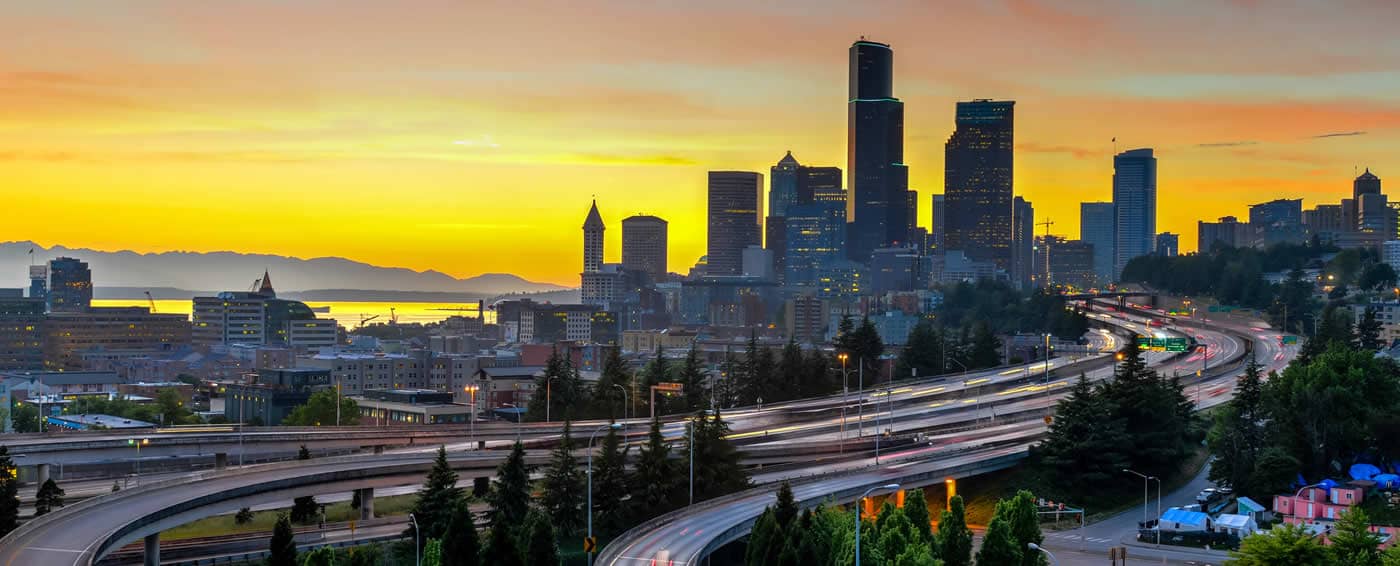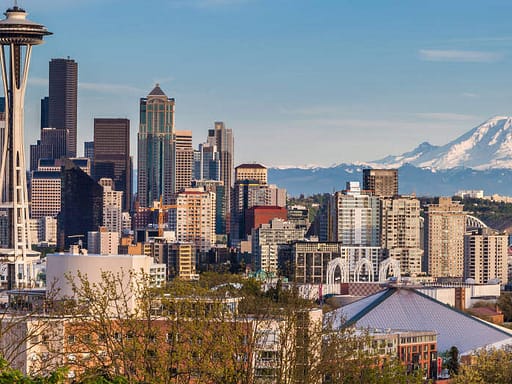6 U.S. Cities Thriving Despite Challenges
In the landscape of American cities, some urban centers are showing remarkable resilience and growth despite facing significant challenges. Whether dealing with economic shifts, inflation, environmental issues, or social changes, these cities are not just surviving—they are thriving. We will explore several U.S. cities that exemplify resilience and adaptability, demonstrating how strategic planning, community engagement, and innovative solutions can lead to thriving communities even in the face of adversity.
Pittsburgh, PA
Pittsburgh, historically known for its steel industry, faced a dramatic economic downturn when the industry collapsed in the late 20th century. However, Pittsburgh has since reinvented itself as a hub for technology, education, and healthcare.
The transformation began with a focus on leveraging the city’s strong educational institutions, such as Carnegie Mellon University and the University of Pittsburgh. These universities became centers for research and innovation, particularly in fields like robotics, biotechnology, and information technology. The presence of these institutions attracted tech companies and startups, fostering a new, diversified economy.
Pittsburgh’s healthcare sector also experienced significant growth, with the University of Pittsburgh Medical Center (UPMC) becoming a leading healthcare provider and employer. The city invested in developing technology and green initiatives, including the Pittsburgh Technology Council and the Pittsburgh Green Building Alliance, which promoted sustainable building practices and energy efficiency.
Community engagement played a crucial role in Pittsburgh’s revival. Neighborhoods that were once in decline saw revitalization through local initiatives and community-driven projects. Public-private partnerships helped improve infrastructure, transportation, and public spaces, making the city more attractive to residents and businesses alike.
Detroit, MI
Detroit’s story of resilience is one of the most well-known in recent American history. The city, once the thriving heart of the American automotive industry, faced severe economic decline, population loss, and bankruptcy. Despite these challenges, Detroit is experiencing a renaissance driven by innovation, investment, and community spirit.
The revitalization efforts began with a focus on the downtown area, where significant investments were made in real estate and infrastructure. Dan Gilbert, founder of Quicken Loans, played a pivotal role by moving his company’s headquarters to downtown Detroit and investing heavily in the area. His efforts spurred the redevelopment of office spaces, residential properties, and retail establishments, breathing new life into the city center.
Detroit’s entrepreneurial spirit also fueled its recovery. The city has become a magnet for startups and tech companies, attracted by affordable real estate and a growing network of support services, including business incubators and accelerators. TechTown Detroit and the Detroit Creative Corridor Center are examples of organizations that support local entrepreneurs and innovators.
In addition to economic investments, community initiatives have been critical. Grassroots organizations and local leaders have worked tirelessly to improve neighborhoods, support education, and provide essential services. Programs aimed at reducing blight, increasing homeownership, and enhancing public safety have contributed to a renewed sense of community and optimism.
New Orleans, LA
New Orleans, a city known for its vibrant culture and rich history, faced unprecedented challenges following Hurricane Katrina in 2005. The disaster left much of the city underwater, displaced thousands of residents, and caused widespread destruction. Yet, in the years since, New Orleans has demonstrated extraordinary resilience and a commitment to rebuilding stronger than before.
Rebuilding efforts focused on both infrastructure and community. The federal government, along with state and local agencies, invested billions in rebuilding levees, improving drainage systems, and enhancing flood protection. These efforts aimed to make the city more resilient to future storms and flooding.
Economic diversification has been a key strategy in New Orleans’ recovery. While tourism remains a vital part of the economy, the city has also invested in other sectors such as technology, healthcare, and education. The presence of organizations like the New Orleans BioInnovation Center and the Propeller Incubator supports startups and entrepreneurs, fostering innovation and economic growth.
Community engagement has been at the heart of New Orleans’ revival. Local organizations, non-profits, and community leaders have played a pivotal role in rebuilding neighborhoods, supporting displaced residents, and preserving the city’s unique cultural heritage. Initiatives such as Make It Right, founded by actor Brad Pitt, focused on constructing sustainable, affordable homes in the Lower Ninth Ward, one of the areas hardest hit by the hurricane.
Tulsa, OK
Tulsa, Oklahoma, historically known for its oil industry, has faced economic fluctuations over the years. However, Tulsa has successfully diversified its economy and invested in quality of life improvements, making it an attractive place to live and work.
The city’s leadership recognized the need to reduce dependence on the oil industry and began promoting other sectors such as aerospace, healthcare, and technology. The presence of major employers like American Airlines and Saint Francis Health System has contributed to economic stability and job growth.
Tulsa has also made significant investments in education and workforce development. Institutions like the University of Tulsa and Tulsa Community College offer programs that align with the needs of local industries, ensuring a skilled workforce for the future. The Tulsa Remote program, which offers financial incentives for remote workers to relocate to Tulsa, has been successful in attracting new residents and talent to the city.
Quality of life improvements have been a major focus for Tulsa. The city has invested in public parks, recreational facilities, and cultural amenities. The Gathering Place, a world-class park along the Arkansas River, has become a popular destination for residents and tourists alike, offering a wide range of activities and events.
Chattanooga, TN
Chattanooga, once a declining industrial city, has transformed itself into a thriving tech hub and outdoor destination. The city’s turnaround began with a focus on improving infrastructure and quality of life.
One of Chattanooga’s most notable achievements is the development of its high-speed internet network, known as the “Gig City” initiative. In 2010, Chattanooga became the first city in the U.S. to offer gigabit-speed internet to its residents and businesses. This investment in digital infrastructure attracted tech companies and startups, fostering a vibrant innovation ecosystem.
Chattanooga has also leveraged its natural beauty to promote outdoor activities and tourism. The city is surrounded by mountains and rivers, offering opportunities for hiking, biking, climbing, and water sports. The revitalization of the Tennessee River waterfront and the development of the Chattanooga Riverwalk have enhanced the city’s appeal as an outdoor destination.
Community engagement and public-private partnerships have played a crucial role in Chattanooga’s success. The city has worked with local businesses, non-profits, and residents to address challenges and create a vision for the future. The Enterprise Center and the Chattanooga Area Chamber of Commerce are examples of organizations that support economic development and community initiatives.
Kansas City, MO
Kansas City, Missouri, has faced economic challenges over the years, but the city has successfully reinvented itself as a hub for innovation, culture, and entrepreneurship. The city’s diverse economy, strategic investments, and strong sense of community have contributed to its resurgence.
Kansas City’s tech sector has seen significant growth, with the presence of major companies like Cerner Corporation and Garmin International. The city’s investment in Google Fiber, one of the first cities to receive the high-speed internet service, has also attracted tech startups and entrepreneurs.
The city’s arts and cultural scene is thriving, with institutions like the Nelson-Atkins Museum of Art, the Kauffman Center for the Performing Arts, and the Crossroads Arts District. These cultural amenities enhance the quality of life for residents and attract visitors from around the country.
Kansas City has also focused on improving infrastructure and public spaces. The development of the streetcar system and the revitalization of downtown areas have made the city more accessible and vibrant. Public-private partnerships have been instrumental in these efforts, fostering collaboration and innovation.
These cities—Pittsburgh, Detroit, New Orleans, Tulsa, Chattanooga, and Kansas City—demonstrate the power of resilience, innovation, and community engagement. Each city has faced significant challenges, from economic decline to natural disasters, but has emerged stronger and more vibrant. Through strategic investments, diversification of their economies, and a commitment to improving quality of life, these cities are thriving despite the obstacles they have encountered. Their stories serve as inspiring examples of how urban centers can adapt, innovate, and prosper in the face of adversity.












